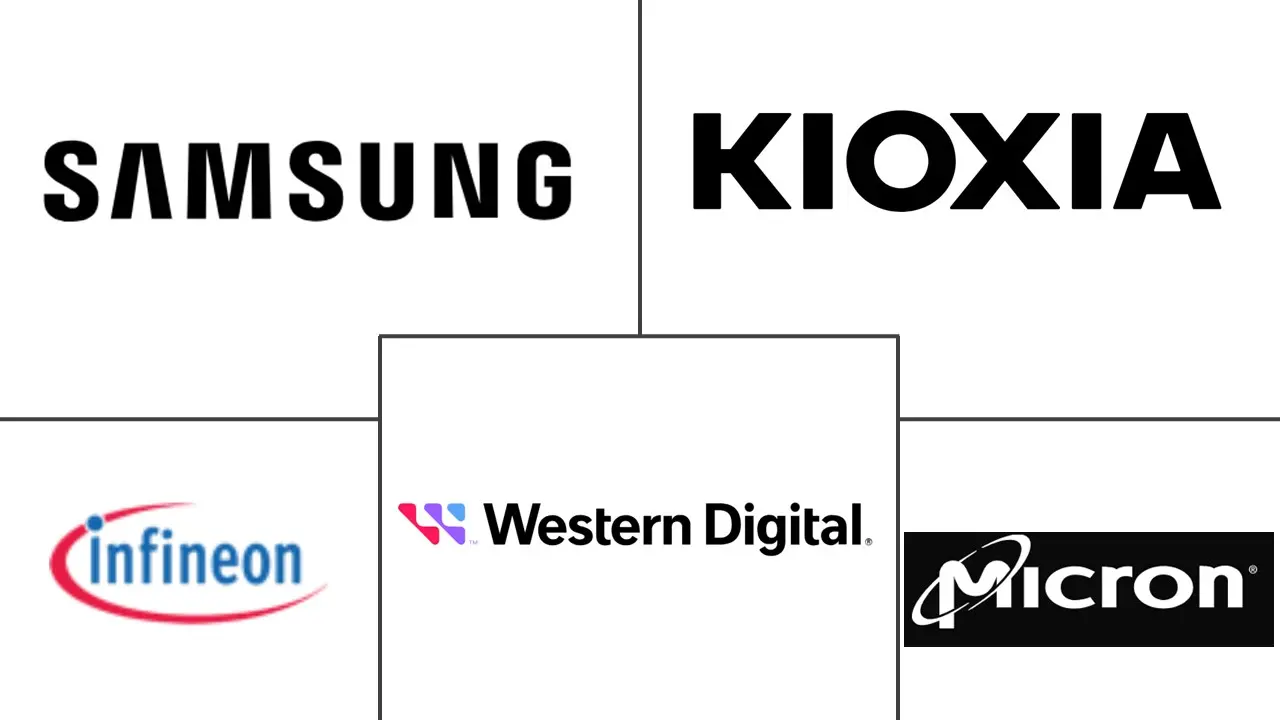Americas Flash Memory Market Size and Share
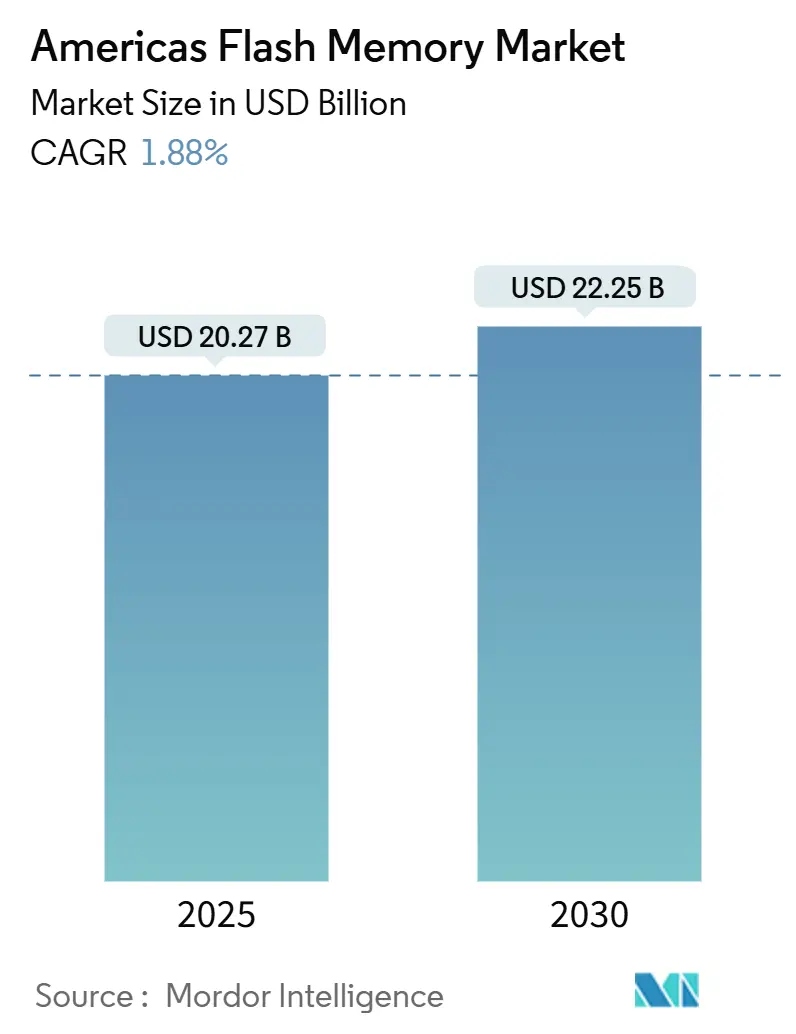
Americas Flash Memory Market Analysis by Mordor Intelligence
The Americas Flash Memory Market size is estimated at USD 20.27 billion in 2025, and is expected to reach USD 22.25 billion by 2030, at a CAGR of 1.88% during the forecast period (2025-2030).
The market is expected to be driven by the region's rising need for hard disk drives and the demand to install flash in various manufactured consumer electronic products. Furthermore, the market will be driven by the demand for Flash memory devices such as NAND and NOR for a wide range of applications across multiple end-users such as communications, automotive, and others.
- Flash , also referred to as flash storage, is a type of nonvolatile memory that erases data in blocks and rewrites data at the byte level. It can be reprogrammed and wiped clean using electricity. Flash memories, such as SSDs, are gradually replacing hard disc drives (HDDs) due to their speed and dependability, driving the market in regions like the United States, Canada, and others.
- Rising demand for low-cost storage solutions across various consumer electronics applications will drive market growth. Furthermore, the comparative advantages of flash types such as NAND over alternatives and the increasing proliferation of 5G and IOT devices are expected to drive the market's overall growth.
- The North America region, dominated by the United States, is expected to undergo significant growth over the study period owing to factors such as the increasing proliferation of 5G and IOT devices, the growing Telecom industry, and the rising adoption of devices in consumer electronics. For example, Ericsson predicts that more than 195 million 5G subscriptions will be available in the United States by 2026, with 5G accounting for roughly 71.5% of the total U.S. mobile market by 2029. Such factors will drive memory device demand.
- Moreover, the region remains at the forefront of emerging technology adoption, such as IoT and AI, which is one factor driving the flash device market. According to CTA, 22 million homes in the United States already use IoT or smart technology to make life easier. The smart home market is expected to generate USD 23.5 billion in revenue by 2023. (23.2 billion USD in 2021).
- Flash storage has evolved into a critical component of smartphones. The demand for flash devices has been growing exponentially exponentially, primarily due to the average capacity of smartphones. According to the Consumer Technology Association, more than 155 million smartphones were supplied to the United States in 2022, representing a nearly 1% increase from 2021. Furthermore, as smartphone adoption grows, companies add extra features and applications to differentiate their products from competitors.
- However, With increasing end-user demand for flash devices such as NOR Flash , research and development costs are expected to rise. Furthermore, the availability of substitutes is one of the market's challenges. For example, NAND and DRAM are the most commonly used NOR flash substitutes. However, in terms of density, NOR flash memory is frequently compared to NAND flash .
Americas Flash Memory Market Trends and Insights
NOR Flash is Expected to Witness Faster Growth Rate
- NOR flash is a type of and one of the non-volatile storage technologies. It is used in applications where single bytes of data must be written and read. The products are designed to provide lower memory densities than NAND and to reduce power consumption in end-user devices.
- The rising demand for NOR flash in consumer electronics and communication devices, the emergence of data-centric applications, and the need for increased storage capacity drive the market studied over the forecast period. Furthermore, the increasing emphasis on AI for wearables, consumer electronics, and other applications is becoming a disruptive trend, increasing memory size requirements, which drives the NOR devices.
- Moreover, because embedded computing devices such as wearables or small IoT devices frequently use NOR flash to store very small amounts of executable code, such patterns highlight the enormous demand in the region for the market under consideration. According to CTA, 22 million homes in the United States already use IoT or smart technology to make life easier. The smart home market is expected to generate USD 23.5 billion in revenue by 2023. (23.2 billion USD in 2021) which creates the need for Flash -based devices.
- To meet demand and maintain a competitive edge in the market, major vendors in the area are constantly investing in various product innovations, acquisitions, and expansions. For example, in August 2022, Micron, the company that owns the Crucial RAM brand, announced a USD 40 billion investment over the next ten years to build cutting-edge production facilities in the United States. One of the major factors driving demand for NOR Flash devices is the company's intention to manufacture memory chips after 2025.
- In addition, Microchip announced the SST26LF064RT, a 64-Mbit serial quad I/O NOR flash device for demanding aerospace and defense systems, in April 2022. The COTS technology device is radiation resistant and can operate in a total ionizing dose (TID) environment of 50 kilorads (krads). Microchip's second SuperFlash device was designed to reduce system development time, cost, and risk. Such advancements are expected to propel the market.
- The region's industrial segment is also expected to drive the market for a significant share. In robots, NOR flash is used as an embedded device for code execution. With the increased adoption of industrial robots in the region, the market for NOR Flash is expected to grow rapidly. According to IFR, robotic installations in the Americas will have 60,000 units by the end of 2024. Such factors will drive the need for flash devices to be installed in various applications.
- Furthermore, implementing the 5G network has fueled the market's post-lockdown expansion. According to CTIA, 5G networks cover over 315 million Americans, one in every three American adults owns a 5G device, and 5G is the fastest-growing market for home internet. Furthermore, the GSMA predicts thatBy 2030, North America is poised to lead the global charge in 5G adoption, with a projected rate of 90%. Such factors will also drive the demand for NOR Flash devices in the communications sector.
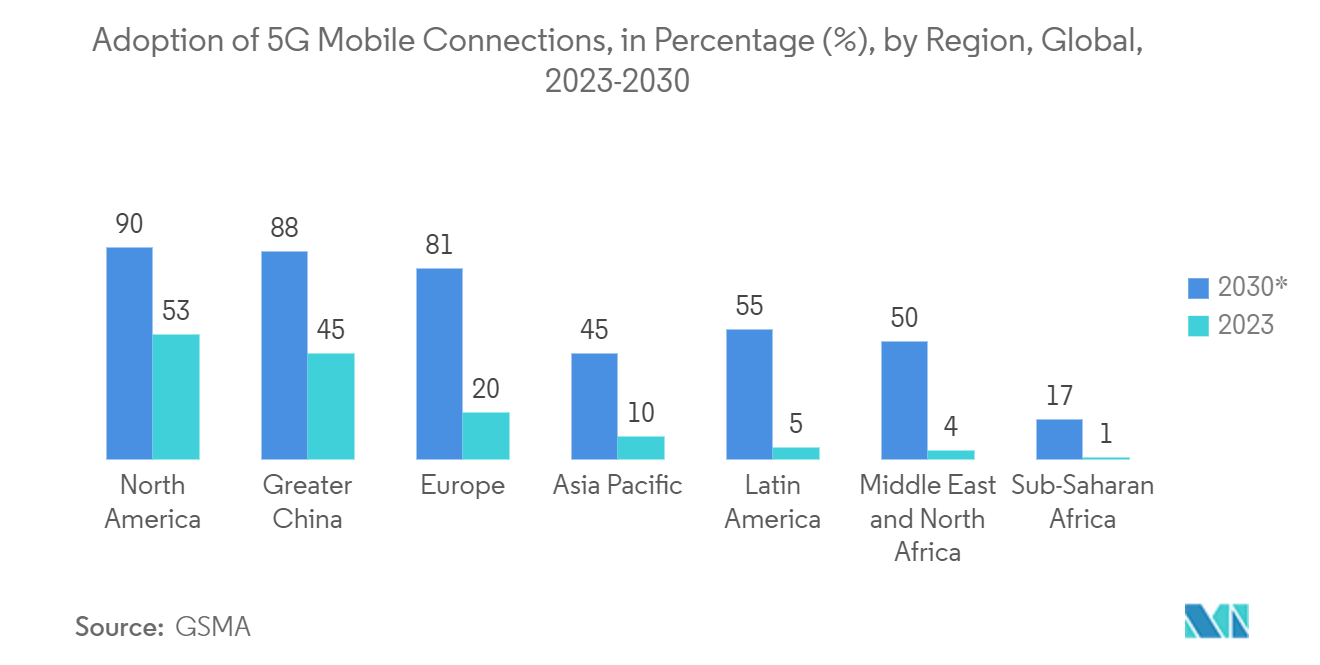
Automotive is Expected to Drive the Market
- The Americas is a significant market in the automotive industry. The total number of vehicles produced in the United States alone accounts for a significant portion of global production. The demand for Flash memory devices used in automotive applications has steadily increased. For example, NOR Flash is used in infotainment and engine control applications. However, as advancements in automotive computerization continue, Flash memory devices are finding use in a broader range of automotive applications.
- For instance, NOR Flash , in particular, has seen rapid demand growth in advanced driver-assistance systems (ADAS), digital instrument clusters, and infotainment systems. One of the primary factors driving demand for these systems in recent years has been growing awareness of the importance of ADAS in reducing car accidents. Many countries in the Americas have passed legislation requiring various types of ADAS in passenger vehicles. For example, since 2018, new vehicles sold in Canada must have a backup camera, an ADAS feature.
- The growing popularity of self-driving or autonomous vehicles is a significant growth driver for the ADAS market, necessitating the installation of Flash memory devices in vehicles. Furthermore, high-capacity NAND Flash memory modules are essential in various automotive applications and systems. To succeed, the transition to autonomous and electrically powered vehicles and the resulting transition to a centralized vehicle architecture requires high-performance, high-bandwidth, stable, and secure memory. With increased global sales of cars and EVs, demand for memory products is expected to rise.
- Storage devices are expected to last as long as the vehicle is on the road and meets automotive-grade qualifications. Automakers, Tier 1 system designers, and other critical stakeholders in the automotive supply chain are quickly adopting NAND flash storage solutions such as embedded Multimedia Card (eMMC), Universal Flash Storage (UFS), and Solid-State Drives (SSD) for performance, reliability, longevity, and security considerations.
- Micron Technology, Inc., for example, announced in March 2022 that it had begun volume production of the world's first 232-layer NAND, built with industry-leading innovations to drive unprecedented performance for storage solutions. Micron's 232-layer NAND technology enables high-performance storage for advanced solutions and real-time services in data centers and automotive applications. Such advancements are expected to drive the demand for Flash memory devices catering to the Automotive segment.
- The flash memory market is expected to be driven by advanced driver assistance systems (ADAS) applications, infotainment/telematics, and cluster/instrumentation in the Canadian automobile industry. Furthermore, motor vehicles and parts are one of Canada's two most important manufacturing industries, according to Canadian Manufacturers and Exporters. Furthermore, increased memory and storage device demand for next-generation connected automobiles and automotive safety systems is driving market growth.
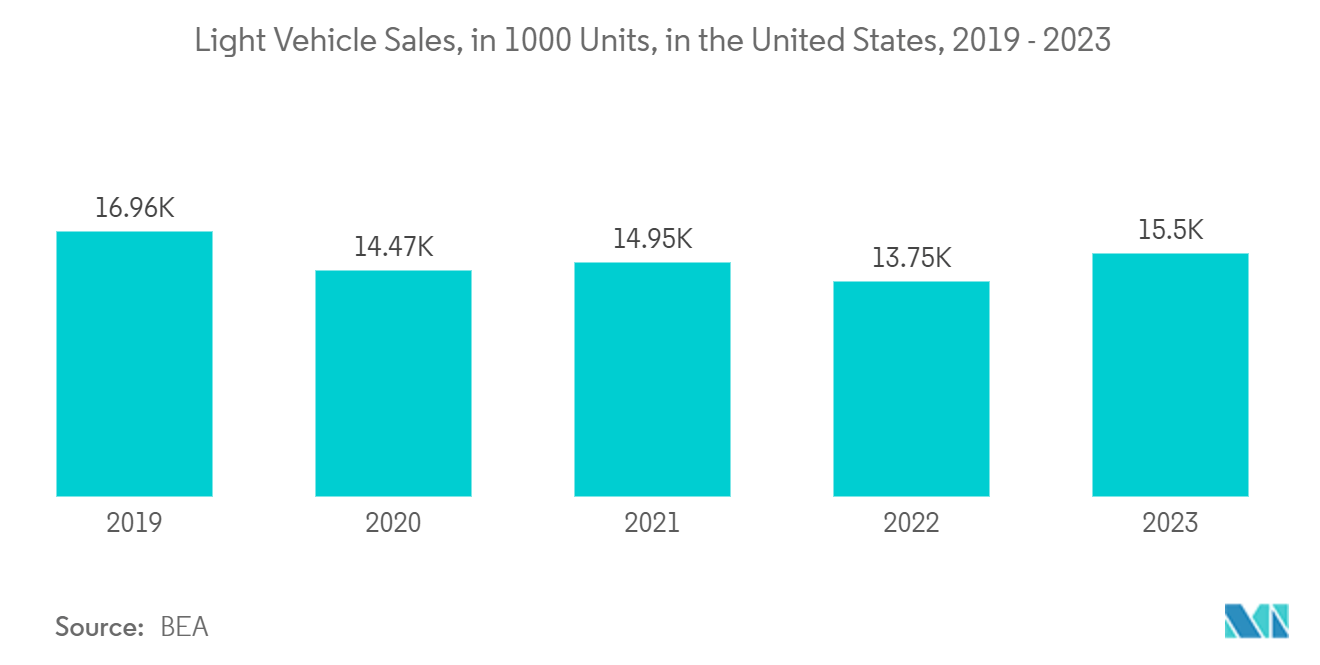
Competitive Landscape
The Americas NOR Flash market is fairly consolidated, with a few vendors controlling a sizable portion of the market. Keysight Technologies, Rohde and Schwarz, and others are among the key players. These players use product launches, collaboration, and partnerships, among other strategic initiatives, to gain a competitive advantage in the regional market.
In March 2023, Western Digital WDC and Kioxia Corporation announced the release of their latest 3D flash technology, which employs advanced scaling and wafer bonding techniques. This technology is ideal for exponential data growth and data-centric applications like smartphones, IoT devices, and data centers. Because of its 218-layer 3D flash that leverages 1Tb triple-level-cell and quad-level-cell with four planes, the new 3D flash technology is the eighth-generation BiCS FLASH with the highest bit density.
In August 2022, NEO Semiconductor, a developer of innovative architectures for 3D NAND flash and DRAM , announced the release of its latest technology offering, X-DRAM, at the Flash Summit 2022. X-DRAM outperforms conventional DRAM by lowering power consumption and increasing the performance of the main used in IT systems and consumer products. It also reduces main latency and closes the performance gap between the processor.
Americas Flash Memory Industry Leaders
-
Infineon Technologies AG
-
Micron Technology Inc.
-
Samsung Electronics
-
Kioxia Corporation
-
Western Digital Corporation
- *Disclaimer: Major Players sorted in no particular order
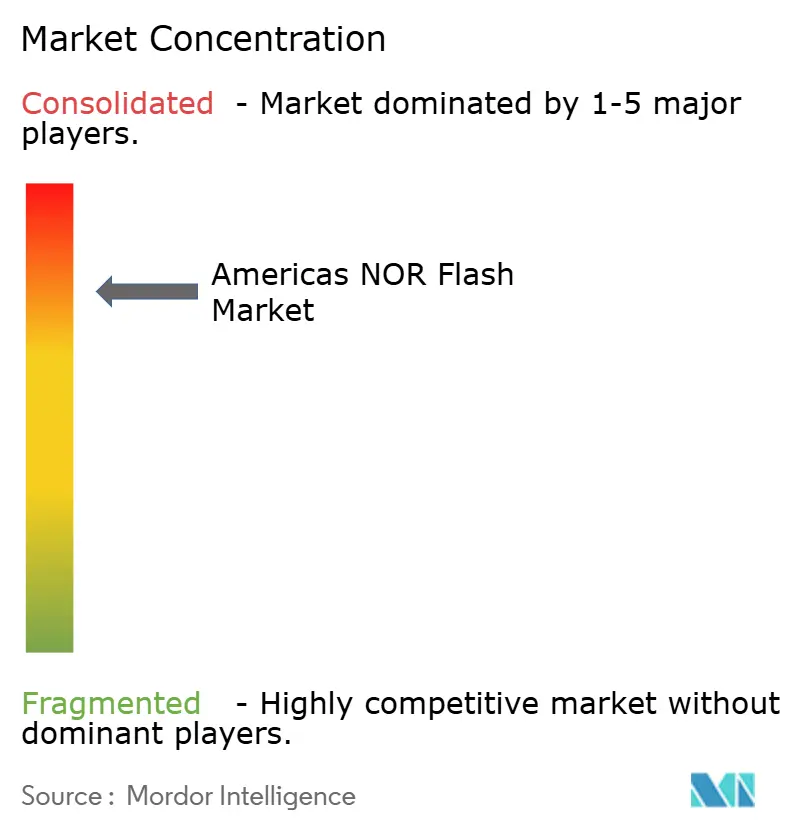
Recent Industry Developments
- February 2023: Frontgrade, a global provider of mission-critical electronics for aerospace and defense, announced the release of the world's first PEM Qualified 3D TLC 4Tb NAND Flash for space applications. Frontgrade flight units will assist users in meeting the demand for mass storage requirements, and the device has a 132-ball JEDEC footprint, measures 12x18x1.4mm, and weighs 0.5gm. It is expected to be the highest-performance NAND memory for space, with a data transaction throughput of 10Gbps.
- February 2023: Infineon Technologies AG has launched the SEMPER Nano NOR Flash optimized for battery-powered, small-form-factor electronic devices. Arising wearable and industrial applications, including hearables, fitness trackers, health monitors, GPS trackers, and drones, enables more precision tracking, critical information logging, noise cancellation, enhanced security, and more.
Americas Flash Memory Market Report Scope
Flash is a non-volatile electronic computer storage medium that can be erased and reprogrammed electrically. Flash is widely used in embedded systems to store data and code. Unlike traditional hard drives, flash can store data even after the power is turned off. NOR flash and NAND flash are the two main types of flash . Both employ the same cell design, which consists of a floating gate. The market study comprises the value and volume of flash memory.
The Americas NOR Flash Market is segmented by type (NOR flash [density (2 MB and less, 4 MB and less [greater than 2MB], 8 MB and Less [greater than 4MB], 16 MB and less [greater than 8MB), 32 MB and less (greater than 16MB), 64 MB and less [greater than 32MB]]), NAND flash (by density (128 MB and less, 512 MB and less, 2 GIGABIT and less [greater than 1GB], 256 MB and less, 1 GB and less, 4 GB and less [greater than 2GB]]), by end user (data center (enterprise and servers), automotive, mobile and tablet, client [PC, client SSD]). The report offers the market size in value terms in USD for all the abovementioned segments.
| NAND Flash | By Density | 128 MB and LESS |
| 512 MB and LESS | ||
| 2 GIGABIT and LESS (greater than 1GB) | ||
| 256 MB and LESS | ||
| 1 GIGABIT and LESS | ||
| 4 GIGABIT and LESS (greater than 2GB) | ||
| NOR Flash | By Density | 2 MEGABIT and LESS |
| 4 MEGABIT and LESS (greater than 2MB) | ||
| 8 MEGABIT and LESS (greater than 4MB) | ||
| 16 MEGABIT and LESS (greater than 8MB) | ||
| 32 MEGABIT and LESS (greater than 16MB) | ||
| 64 MEGABIT and LESS (greater than 32MB) |
| Data Center (Enterprise and Servers) |
| Automotive |
| Mobile and Tablets |
| Client (PC, Client SSD) |
| Other End-user Applications |
| By Type | NAND Flash | By Density | 128 MB and LESS |
| 512 MB and LESS | |||
| 2 GIGABIT and LESS (greater than 1GB) | |||
| 256 MB and LESS | |||
| 1 GIGABIT and LESS | |||
| 4 GIGABIT and LESS (greater than 2GB) | |||
| NOR Flash | By Density | 2 MEGABIT and LESS | |
| 4 MEGABIT and LESS (greater than 2MB) | |||
| 8 MEGABIT and LESS (greater than 4MB) | |||
| 16 MEGABIT and LESS (greater than 8MB) | |||
| 32 MEGABIT and LESS (greater than 16MB) | |||
| 64 MEGABIT and LESS (greater than 32MB) | |||
| By End User | Data Center (Enterprise and Servers) | ||
| Automotive | |||
| Mobile and Tablets | |||
| Client (PC, Client SSD) | |||
| Other End-user Applications | |||
Key Questions Answered in the Report
How big is the Americas Flash Memory Market?
The Americas Flash Memory Market size is expected to reach USD 20.27 billion in 2025 and grow at a CAGR of 1.88% to reach USD 22.25 billion by 2030.
What is the current Americas Flash Memory Market size?
In 2025, the Americas Flash Memory Market size is expected to reach USD 20.27 billion.
Who are the key players in Americas Flash Memory Market?
Infineon Technologies AG, Micron Technology Inc., Samsung Electronics, Kioxia Corporation and Western Digital Corporation are the major companies operating in the Americas Flash Memory Market.
What years does this Americas Flash Memory Market cover, and what was the market size in 2024?
In 2024, the Americas Flash Memory Market size was estimated at USD 19.89 billion. The report covers the Americas Flash Memory Market historical market size for years: 2019, 2020, 2021, 2022, 2023 and 2024. The report also forecasts the Americas Flash Memory Market size for years: 2025, 2026, 2027, 2028, 2029 and 2030.
Page last updated on:
Americas Flash Memory Market Report
Statistics for the 2025 Americas Flash Memory market share, size and revenue growth rate, created by Mordor Intelligence™ Industry Reports. Americas Flash Memory analysis includes a market forecast outlook for 2025 to 2030 and historical overview. Get a sample of this industry analysis as a free report PDF download.
